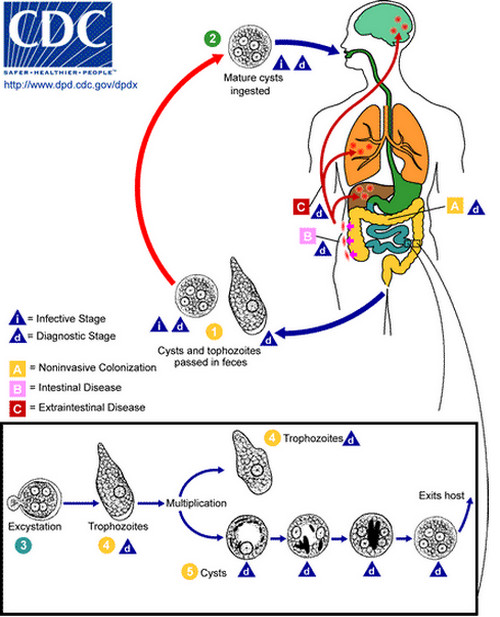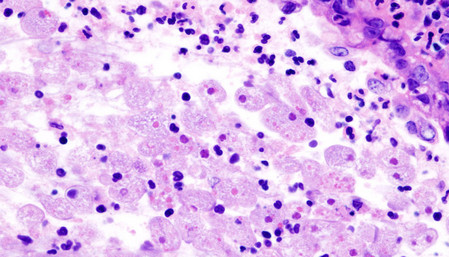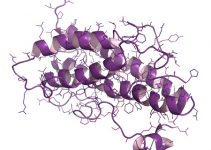What is Amoebic Dysentery?
Amoebic dysentery or intestinal amoebiasis is a parasitic infection that is caused by the protozoa Entamoeba histolytica. This protozoan parasite is said to be the 3rd leading intestinal infection that can cause death.
According to report, about 40,000 to 100,000 people worldwide die of amoebiasis in a year. In the United States, only about 5,000 people are diagnosed in a year. The said condition commonly affects travelers who have had a recent visit in countries where the condition is epidemic.
There is high incidence rate of amoebiasis worldwide in the tropical and subtropical countries. Because of poor sanitation practices, this condition is common like in developing countries. Cases in developed countries are minimal because most of the affected are immigrants from countries which amoeba dysentery is common. From other reports, it is noted that active and practicing homosexual men are affected with amoebiasis.
Tests for amoebic dysentery include physical examination. Palpating the abdomen to test for presence of tenderness is performed. The inspection would also include testing for enlargement of the liver. Blood tests are also done in order to confirm for amoebiasis. Microscopic examination of stools can identify presence of the causative agent Entamoeba histolytica.
Amoebic Dysentery Symptoms
There are a number of manifestations with amoebic dysentery. However, a significant percentage of the affected do not develop the symptoms, according to CDC. There are initial symptoms and progression to severe stage. The following are the signs and symptoms of amoebic dysentery:
Mild symptoms
- Abdominal cramping and tenderness.
- Diarrhea or loose bowel movements. An average of 5 (3-8) semi formed stools in a day. Sometimes, it is accompanied by mucus and blood.
- Foul-smelling stool.
- Weight loss due to diarrhea which can possibly cause dehydration.
- Easy fatigability.
- Abdominal bloating due to excessive gas.
- Tenesmus or a feeling of constant need to defecate.
- Rectal pain during a bowel movement.
- Fever and chills. The fever is basically low-grade.
Severe symptoms
- Abdominal tenderness may be more intense.
- Diarrhea episodes are now more than stools per day and sometime lead to 20 loose bowel movements. The liquid bowel movements are with blood.
- Nausea and vomiting.
- Fever and chills continues.
- Abdominal pain in the upper right quadrant.
- Enlargement of liver.
- Complication: peritonitis is a condition that arises when amoeba invades the intestinal wall and peritoneum causing perforation.
- There is development of inflammation which needs an emergent attention.

Picture 1 : Entamoeba histolytica LifeCycle

Picture 2 : Amoebic dysentery in colon biopsy
Amoebic Dysentery Causes
The causative agent of amoebic dysentery is the intestinal parasite Entamoeba histolytica. This is said to be the primary cause as it tends to live in the large intestine of the affected. The cysts are the known infective agents of amoeba dysentery. These are the free amoebae or trophozoites that can be easily excreted from the body through feces.
This agent can spread to other neighboring organs, such as the liver, lungs and brain via blood. Spread of this agent is due to contaminated food and water from stools containing parasite. When the human waste is used as fertilizer, there is likeliness of its spread.
Common mode of transmission is ingestion of street, improperly prepared foods which is common in developing countries this can also be spread from one person to another directly. Drinking of contaminated water is also a form of transmission. Direct contact with mouth or the rectal area from an infected person, especially when symptoms are active, can lead to transmission. Example of this is oral-anal sex (unprotected).
Treatment for Amoebic Dysentery
Treatment plan for amoebic dysentery is aimed to relieve the symptoms and replace any loss. The following are the interventions for treating amoebiasis:
Provide antibiotics
Metronidazole is the drug of choice for the parasitic agent Entamoeba histolytica. This is usually given in a course of 5 days, but when it involves the liver and other extraintestinal areas it would take 10 days to two weeks for treatment to be done. Other drugs are ornidazole, which is effective in treating amoebiasis but has side effects such as nausea and vomiting.
Fluid replacement
This is very necessary as persistent diarrhea can lead to dehydration. Fluid replacement can be attained through intravenous fluids and can also be an access for antibiotics. Increasing the patient’s oral fluid intake is also suggested and can help relieve dehydration.
Antidiarrheal drugs
These are provided to patients to reduce diarrheal episodes. However, antibiotics can do the work, antidiarrheal drugs can assist in the process.
Pain relievers
These are provided in order to relieve the discomfort from abdominal pain, cramping and tenderness.
Drainage
This is only necessary if there are large abscesses found in the liver. This is a meticulous procedure for this involves proper positioning and use of a needle for drainage.
Amoebic Dysentery Diet
Diet recommendations are provided to patients in order to reduce the manifestations and discomfort from amoebic dysentery. Proper nutrition should be given to patients as a lot has been lost during the course of the disease. It has been proven that aloe vera juice can help in the healing process of the digestive system.
Prevention of Amoebic Dysentery
Prevention from amoebic dysentery can be easily attained when one is conscious enough and in taking good care of their hygiene. Methods to avoid such intestinal infection include the following:
- Proper hand washing. This shall include use of disinfecting soap and hot water before eating and most especially before preparing food. Proper food handling can make one a step away from contracting this intestinal disease.
- After using the toilet, it is proper etiquette to wash hands properly.
- Practice protected sex.
- Since food and water are quite common modes of transmission, it is necessary to make sure you know what you eat and drink. Less intake of uncooked food should be practiced. Boiling your drinking water can avoid possible ingestion of the parasite. Adding water-purifying agents in the drinking water can prevent infection.
- When travelling countries and places known to have poor sanitation, being cautious on what food and drink you intake is very important.
References
http://en.wikipedia.org/wiki/
http://www.rightdiagnosis.com/

